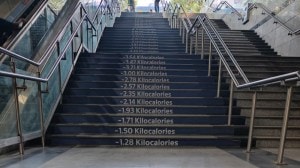Offices going green,homes lag
A New Delhi-based developer,3C,has announced two green residential projects in Noida this year at a budget of Rs 2,600 crore. Siddha Group...
A New Delhi-based developer,3C,has announced two green residential projects in Noida this year at a budget of Rs 2,600 crore. Siddha Group,a Kolkata-based realtor,is developing a green housing complex,Xanadu,in Kolkata. In Mumbai,Mahindra Lifespaces is developing a green project Mahindra Splendour in Bhandup.
At a time when the real-estate sector is passing through a trough,the concept of green buildings is catching on among developers and buyers. This is because of two factors: growing environment consciousness,and lower cost of operation of these buildings. With the cost of energy rising,the demand for such buildings is expected to rise in future. Sachin Sandhir of the Royal Institute of Chartered Surveyors (RICS),a London-based realty institution that trains realty professionals,says,With green buildings,real-estate professionals are helping to improve the quality of urban life in Indian cities.
The 3C Group is developing two projects,the first consists of 500 luxury flats spread over 40 acres in Sector 100,Noida. The other green residential project will be a 57-acre luxury development with a nine-hole golf course and a health spa in Greater Noida,which will be launched in the fourth quarter of 2009. It will offer 100 luxury villas ranging from 1,000 to 3,500 square yards.
In Siddha Groups project in Kolkata,energy-efficient equipment will be installed,as recommended by the West Bengal Green Energy Development Corp,a state government enterprise set up to promote environment-friendly construction. Xanadu will have 314 studio apartments,each with around 600 sq ft area. Located at Rajarhat,this showpiece township of the West Bengal government will have low-carbon emission as its unique selling proposition. About 15 per cent of the energy used in these apartments will come from renewable sources. Siddha Groups joint managing director Sanjay Jain says they would install green energy equipment in the building following the guidelines of the Green Energy Corp.
KEY DRIVERS
While green construction has not caught on in India in a big way yet,whatever little is being done is the result of a few developers trying to carve a niche for themselves in this competitive market. Abhishek Kiran Gupta,head of real estate intelligence services at Jones Lang LaSalle Meghraj (JLLM),says,The capital expenditure required on green construction is not insignificant,owing to the systems that need to be put in place. Considering the cash crunch,we are not of the opinion that sustainability should feature among the top three priorities of Indian developers today. However,the green concept will survive because it is the way of the future. Those who are adopting it now are not doing so for immediate monetary benefits but out of commitment towards the environment and to build a convincing brand.
Another important driver of green construction is demand from international occupiers. Many multinational companies follow a strict policy of occupying only sustainable buildings anywhere in the world. Having tasted the benefits of this concept abroad,these companies display high enthusiasm for green construction even when they come to India.
COST-BENEFIT ANALYSIS
Green buildings use far less natural resources and energy during construction. They use recycled building materials,low-voc paints,real linoleum floors,and solid wood cabinets. And during their lifetime their cost of maintenance and running (especially the cost incurred on energy consumption) is far less.
The cost of construction of a green building is about 5 per cent higher than that of a normal building,but it gives users manifold benefits, explains Vidur Bharadwaj,director of 3C Group,Thus,there is huge cost saving on energy consumption. We have delivered the Patni Knowledge Centre where they are saving up to 48 per cent on energy cost. Bharadwaj adds that it is a myth that it is not financially sustainable for developers to undertake green constructions. The demand for such buildings is on the rise,he says. Hence,whatever investment the developer makes in such developments,he is compensated by way of increased business opportunities and greater acceptability from users.
LEADING THE WAY
In India,the residential segment currently has a very small proportion of green buildings. More such buildings belong to the commercial segment. And even in the latter segment,not more than 18 LEEDS-certified commercial buildings exist in India today. Mumbai tops the list of certified green buildings (17.58 per cent). Next come Hyderabad (16.27 per cent) and Chennai (16.11 per cent),and they are followed by Delhi NCR (13.02 per cent). Ahmedabads contribution is a minuscule 0.02 per cent.
Bharadwaj informs that many developers have started constructing green buildings,though only a few of these are recognised by India Green
Building Council (IGBC). 347 green buildings are registered with IGBC,but segregated numbers for commercial and residential green buildings are not available.
The 3C Group has developed green campuses for companies such as Wipro and Patni at Gurgaon and Noida respectively,which are among the very few buildings in India that have been awarded the platinum rating and LEED (Leadership in Energy and Environmental Design) certification by United States Green Building Council (USGBC). We have delivered more than 12 million sq ft. Our clients include Hewitt,Accenture,Sapient,Nokia,Wipro,IHDP,Patni,Alstom,Adobe,Perot Systems,EXL,Philips,Fiserv,and many more, informs Bharadwaj.
Green buildings offer several benefits. They enhance air quality,provide day lighting in the interiors and help save on energy consumption by at least 30 per cent. Green buildings also provide health benefits to office workers who spend as much as one-third of their lives inside the office. According to a recent survey in Australia,people who work in green buildings have 30 per cent less health problems,are 20 per cent more productive,and have fewer divorces than those working in normal buildings.
The residential segment has yet to take to this concept in a big way because of the higher initial expenditure. However,the notion is slowly changing. Moreover,in India we have before us the example of older buildings that were highly environment-friendly, says Bharadwaj. For instance,the traditional inward-looking haweli (which reduced energy consumption),fountains (that offered cooling through evaporation) and jharoka (which brought ample lighting indoors) are green features that,with some modification,could be incorporated into modern buildings.
GREEN DRIVERS
The Confederation of Indian Industries is actively involved in disseminating information on sustainable construction practices. The Union housing ministry,in consultation with the environment ministry,is considering a proposal to grant fast-track environmental clearance to green residential housing projects. But this proposal has yet to become a reality. If it becomes a reality,developers will be able to save six to seven months (time spent on getting approvals) on going green. Several international standards are already in place in India: GRIHA (via The Energy Research Institute,or TERI) and LEED India (via the Indian Green Building Council,or IGBC). One way to obtain sustainability certification for a building is to take the help of a consultancy that is qualified and has the experience in integrating sustainable practices.
With growing concern about climate change and rising energy costs,the demand for green buildings will surely rise in the days to come. A welcome start has already been made in this direction. l
praveen.singh@expressindia.com



- 01
- 02
- 03
- 04
- 05



























